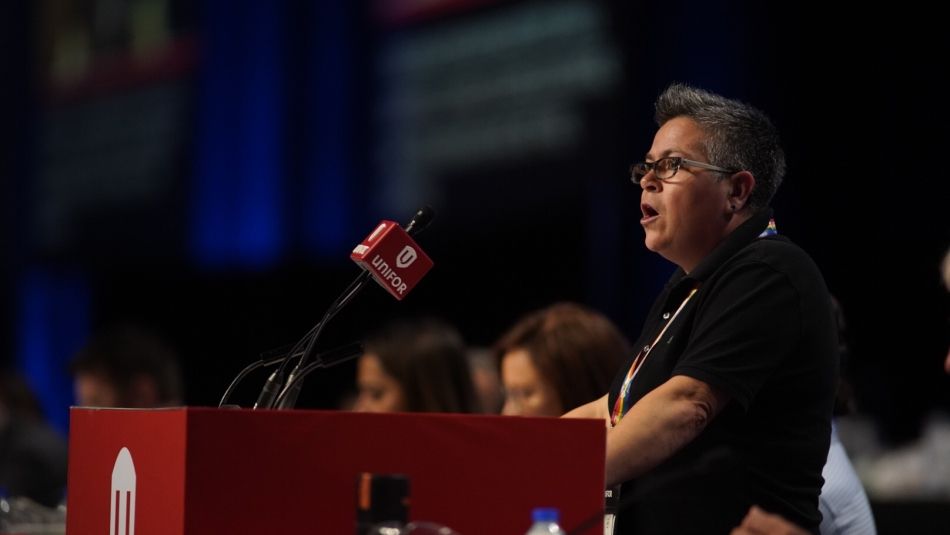
Share
As the world of work changes and the economy evolves, Unifor’s Organizing Department is launching a new organizing strategic plan to bring new groups of workers into the labour movement.
“We can’t get stuck in grooves. We can’t get stuck looking backward. We have to be ready to adapt to new opportunities, changing workplaces, changing political landscapes,” Unifor Organizing Director Kellie Scanlan told the Unifor convention this afternoon.
The new plan is based on four pillars: building a culture of organizing, developing resources, attracting new workers to the union by showing them what Unifor has achieved in similar workplaces and identifying strategic organizing targets.
“All of us play a role, from shop stewards and local activists to industry councils and the elected leadership,” Scanlan said.
Since its founding, Unifor has dedicated great resources to organizing, building a strong and diverse team of staff and activists who help non-union join Unifor.
“The lifeblood of a union is organizing, and we created Unifor to be an organizing union,” said Assistant to the President Chris MacDonald.
Workers in non-Unifor workplaces have been noticing that Unifor members in similar workplaces have better working conditions and wages – and want to achieve similar gains. This happened recently at the Chaleur sawmill in New Brunswick.
“Chaleur workers knew first-hand the benefits of having a collective agreement, simply by having face-to-face conversations with Unifor members at a nearby mill,” Scanlan said.
“Those Unifor members fuelled this organizing drive. They embodied the exact sort of organizing culture we have to foster everywhere.”
At the same time, Unifor is not simply waiting for workers to come to it asking to join the union. Unifor’s Organizing department identifying strategic targets for new drives - such as at WestJet, where Unifor is helping frontline airport workers join the union.
“We saw how quickly momentum was building at WestJet to unionize. We didn’t wait for phone calls, or hot shop tips,” Scanlan said.
“We are a union for thousands and thousands of airline employees. So we positioned ourselves strategically in airports, right across the country. And we started talking to workers.”
A strategic plan for organizing is needed to counter the coordinated attacks on the labour movement by employers, Scanlan said.
“Workers need us and they are depending on us, and we are ready for the challenge.”


